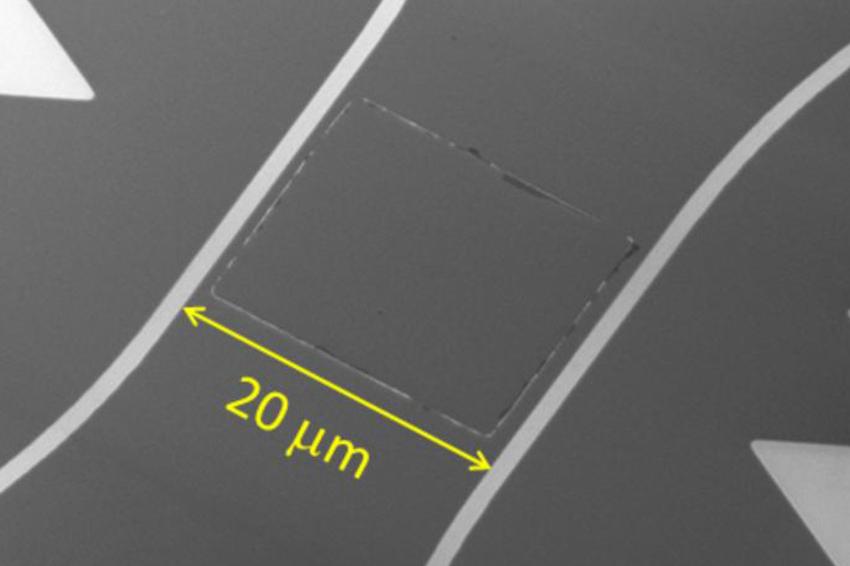World's first superconducting wide-strip photon detector
24.11.2023 - High-performance photon detection will lower the fabrication cost and hurdles of photon detectors.
The National Institute of Information and Communications Technology (NICT) invented a novel structure in a superconducting strip photon detector that enables highly efficient photon detection even with a wide strip, and succeeded in developing the world's first superconducting wide-strip photon detector (SWSPD). The strip width of the detector is over 200 times wider than that of the conventional superconducting nanostrip photon detectors (SNSPDs). With this technology, you can solve the problems of low productivity and polarization dependence which have been in the conventional SNSPDs. The new SWSPD is expected to be applied into various advanced technologies such as quantum information communication and quantum computers, enabling early social implementation of these advanced technologies.
The fabrication of SNSPDs requires the formation of nanostrip structures using advanced nanofabrication technology, which causes variations in detector performance and hinders productivity improvement. In addition, the presence of polarization dependence due to the superconducting nanostrip meandering structure has also limited the application range as a photon detector. Now, NICT invented the novel structure – high critical current bank (HCCB) – that enables highly efficient photon detection even if the strip width is widened in the superconducting strip photon detector, and succeeded in developing a SWSPD with a width of 20 micrometers, which is over 200 times wider than the conventional nanostrip photon detector, and achieved high-performance operation for the first time in the world.
The nanostrip type required the formation of extremely long superconducting nanostrips with a strip width of 100 nm or less in a meandering shape. The wide strip type can now be formed with only single short straight superconducting strip. This SWSPD does not require nanofabrication technology and can be fabricated by highly productive general-purpose photolithography technology. In addition, since the strip width is wider than the incident light spot irradiated from the optical fiber, it is possible to eliminate the polarization dependence seen in the nanostrip type detector. As a result of performance evaluation of this detector, the detection efficiency in the telecommunication wavelength band (λ=1,550 nm) was 78 %, which is comparable to the 81 % of the nanostrip type. Furthermore, the timing jitter showed better numerical values than the nanostrip type.
This achievement enables the fabrication of photon detectors with higher productivity and superior performance and features compared to the nanostrip type which has been positioned as an indispensable photon detection technology in advanced technology fields such as quantum information communication. Such technology is expected to be applied to various quantum information communication technologies and to be an important basic technology for realizing networked quantum computers. In the future, the researchers will further explore the HCCB structure in the SWSPD, to detect photons with high efficiency not only in the telecommunication wavelength band but also in a wide wavelength band from the visible to the mid-infrared. Furthermore, they will also try further expansion of the size of the photon receiving area for expanding the applications such as deep space optical communication technology, laser sensing and live cell observation. (Source: NICT)







